Gregory is a US specialist pack maker whose HQ is located just a few miles south of Salt Lake City in Utah, near the Wasatch Mountains. These rugged peaks are famous for their superb skiing and the high-quality climbing that can be found among the range’s narrow canyons. It’s the perfect base for designing and testing technical outdoor packs.
Gregory is well-known for its attention to fit – as founder Wayne Gregory once put it: “packs should be worn, not carried”. As a result, Gregory packs typically focus on carrying comfort above all else, though great durability and innovative features are also hallmarks of the brand.
That’s not just marketing spin. Gregory offers packs with gender-specific fits, adjustable back lengths, extending hip fins and were the first brand to come out with a range of ‘plus size’ packs, designed specifically for people with different body shapes.
This particular model, the Stout 55 (men's)/Amber 54 (women's) is one of Gregory's more affordable backpacking rucksacks that aims to ensure you can get the perfect fit while also providing all the essential features and quality you need.
 LFTO
LFTOwww.alpinetrek.co.uk
Pros
- Superb fit and comfort
- Loaded with practical features
- Versatile
- Robust
Cons
- Fairly small front pocket
- Ventilation not as good as suspended mesh back systems
| Weight | 1.68kg |
| Volumes | Stout: 35L, 45L, 55L, 70L | Amber: 34L, 44L, 54L, 68L |
| Materials | 210D nylon (40% recycled), 420D high-density nylon, 135D polyester liner, all w/ PFC-free DWR |
| Sizes | One size (adjustable) |
Design and features

The men’s Stout pack is a long-standing stalwart of the Gregory range, as is the women’s model, the Amber. The Stout is currently available in 35, 45, 55 and 70-litre volumes, while the Amber comes in 34, 44, 54 and 68-litre volumes. That range of capacities covers you for everything from a quick overnighter up to an extended trek.
In addition, however, both the Stout 45/Amber 44 and Stout 70/Amber 68 are available in ‘plus size’ fits, designed with extended length shoulder straps and hip belts, plus additional fit revisions to accommodate larger body shapes and sizes.
All the packs are lidded top-loaders, though the larger sizes also offer handy additional access to the main body via a U-shaped front zip, plus a separate zippered bottom compartment with a toggled internal divider. Again, this adds versatility for different types of trips. Load-carrying grunt comes from a perimeter steel alloy ‘wishbone’ frame, with a fibreglass cross-stay and a HDPE plastic framesheet. As well as allowing for laden weights of 20kg+, this design helps to prevent the pack from ‘barrelling’ when full and digging into your spine.
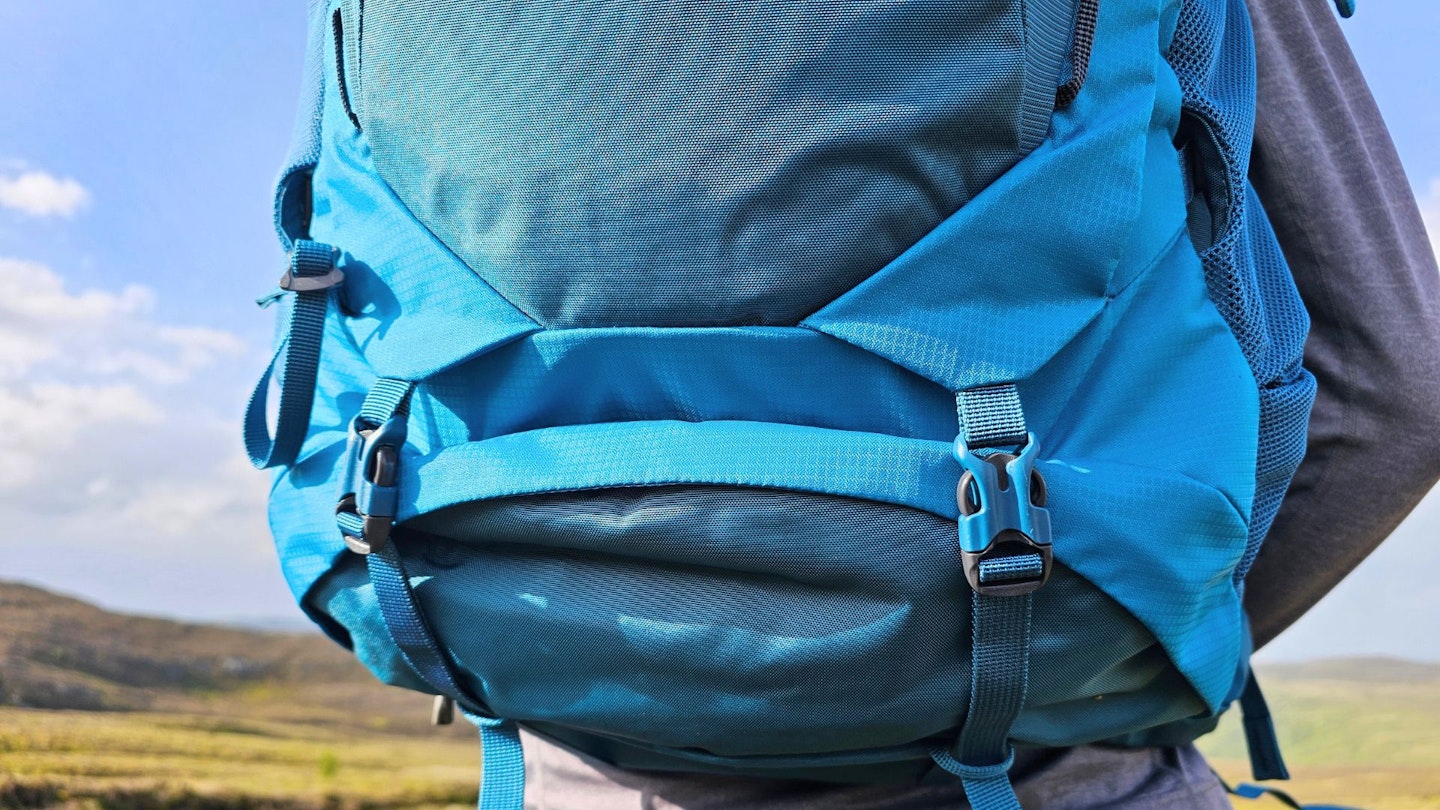
The Stout and Amber are built from pretty tough fabrics: mostly 210D nylon, with 420D high-density nylon used in high-wear areas such as the base. In fact, the base is double lined for added resistance to wear and tear. Only the inner lid and drawcord closure are a little lighter, being made from 135D polyester. All fabrics are treated with a PFC-free durable water-repellent finish.
Overall weight for the Stout 55 is 1.68kg. That’s a reasonable weight-to-volume ratio. It’s not the lightest pack around, but nor is it the heaviest.
Shop this product
Harness and back system
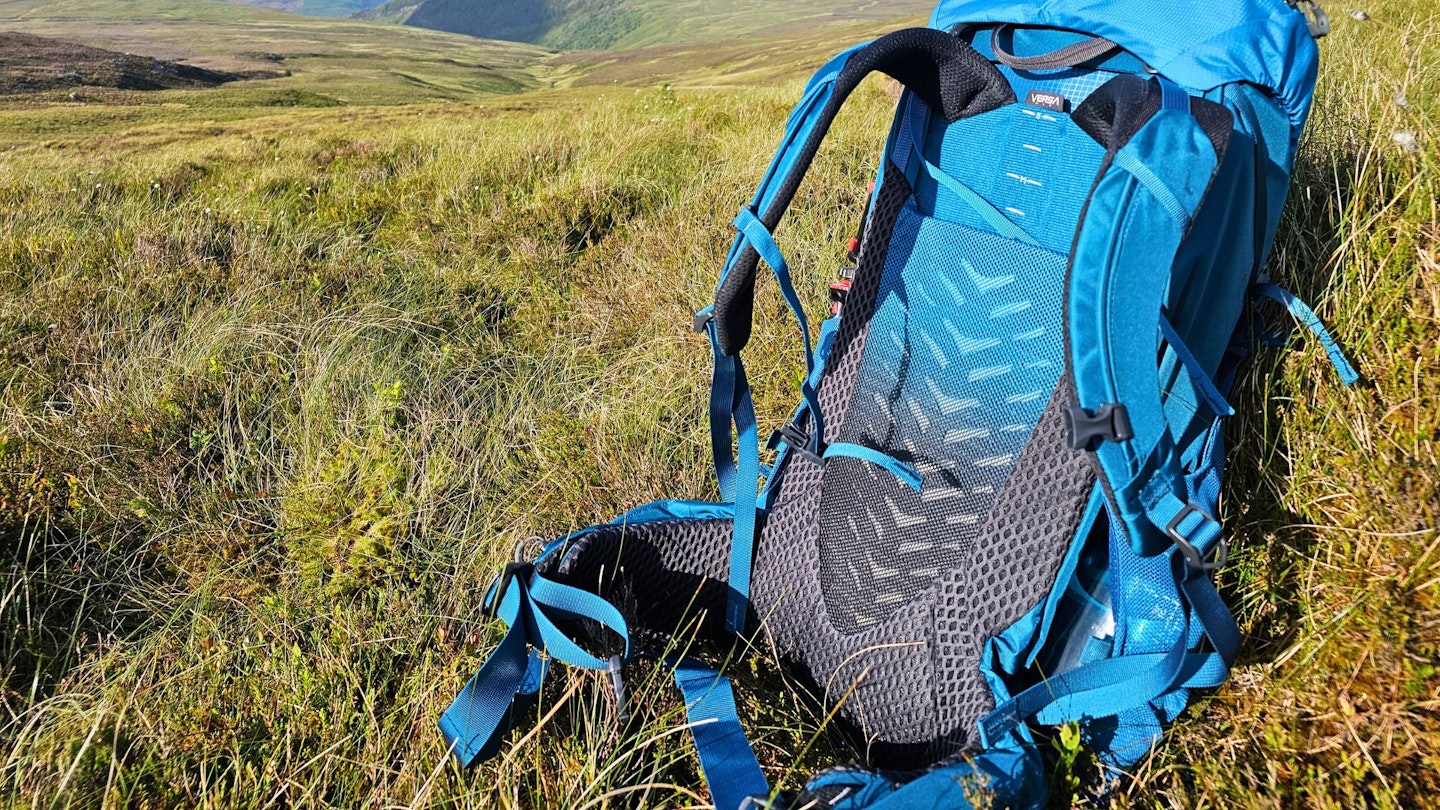
With a choice of men’s or women’s gender-specific fits as well as the plus size options in the range, it’s easy to get an excellent fit, regardless of your size. But in addition, all models also feature an adjustable back length system that Gregory calls ‘VersaFit’. The shoulder straps can be moved up and down to alter the torso length by means of a simple Velcro sliding panel.
The harness is plush, soft and well sculpted, with a secure sliding chest strap and a padded wraparound hipbelt. This has extending fins on either side, which can be adjusted to ensure the webbing belt and buckle don’t dig into your belly. The hipbelt is also fitted with two large zippered pockets, which are long enough to accommodate even the biggest modern smartphones.
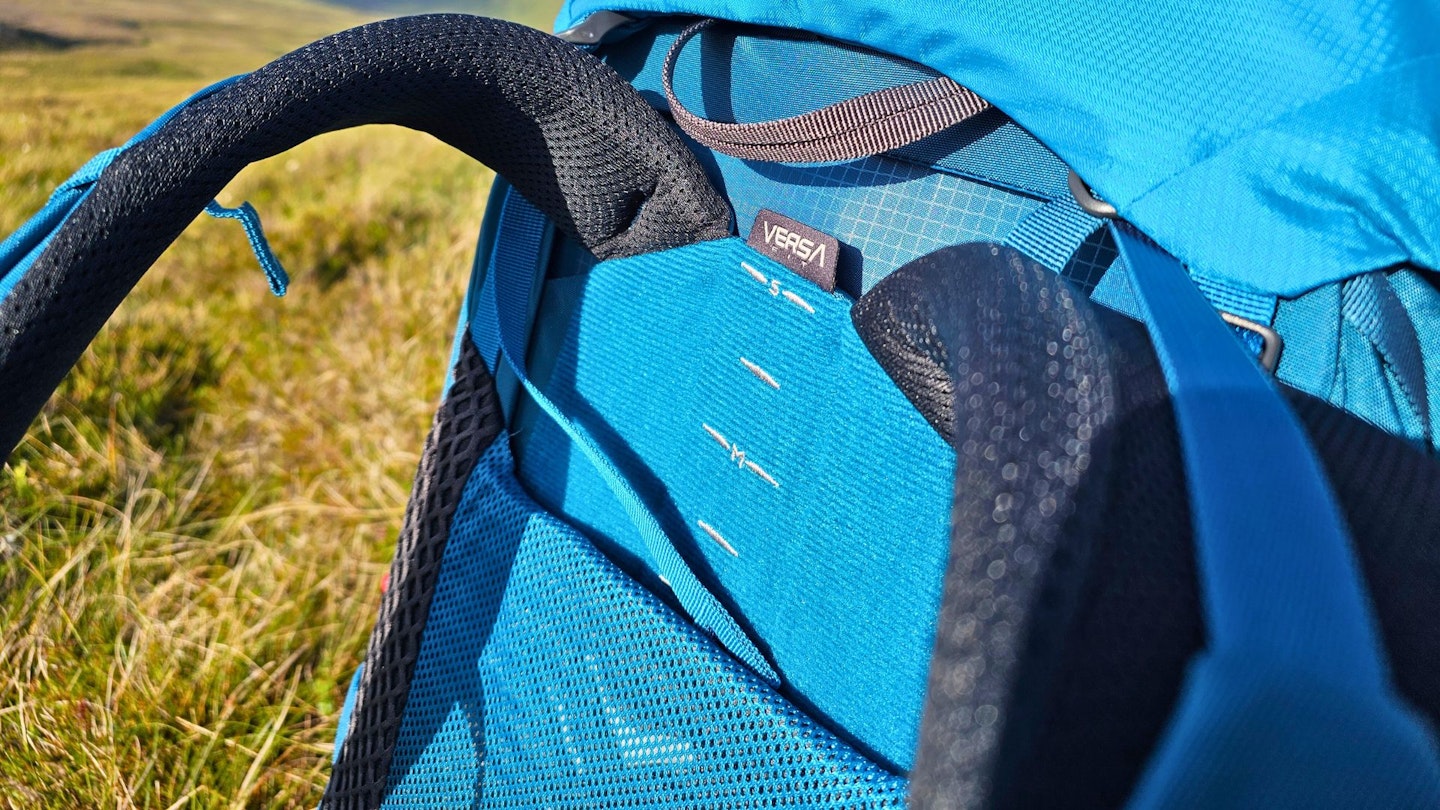
You also get perforated, breathable mesh material on the underside of the straps and a 3D foam back panel with plenty of channels to promote airflow. This is overlaid with mesh fabrics that extend to the hipbelt, creating an integrated, hip-hugging feel that is extremely comfortable. It doesn’t provide quite the same ventilation as a fully suspended trampoline back system, but strikes a nice balance between airflow, comfort and stability.
Pockets and storage

As we’ve come to expect from Gregory, the pack has a full array of storage options. The roomy main compartment is primarily accessed via the top drawcord opening, but you can also get to it via a U-shaped zip on the front panel. Inside, there’s a hydration sleeve to accommodate a water reservoir. This has a Speedclip hydration attachment system that is compatible with Gregory Hydro reservoirs (not included) – but unlike some other backpack makers (we’re looking at you, Osprey), Gregory has also included a simple fabric loop that means you can use a water reservoir from other brands too.
Shop this product
The pack is designed with a secondary bottom compartment, accessed by a lower zip – but if preferred you can unfasten the toggled internal divider to create a single full-length compartment in the main body. This is useful if you’re carrying longer bits of kit like tent poles and don’t want to stash them outside the pack. The lid is a floating design with inner and outer zippered lid pockets. The inner pocket has an internal plastic key clip, plus a pull-out raincover.
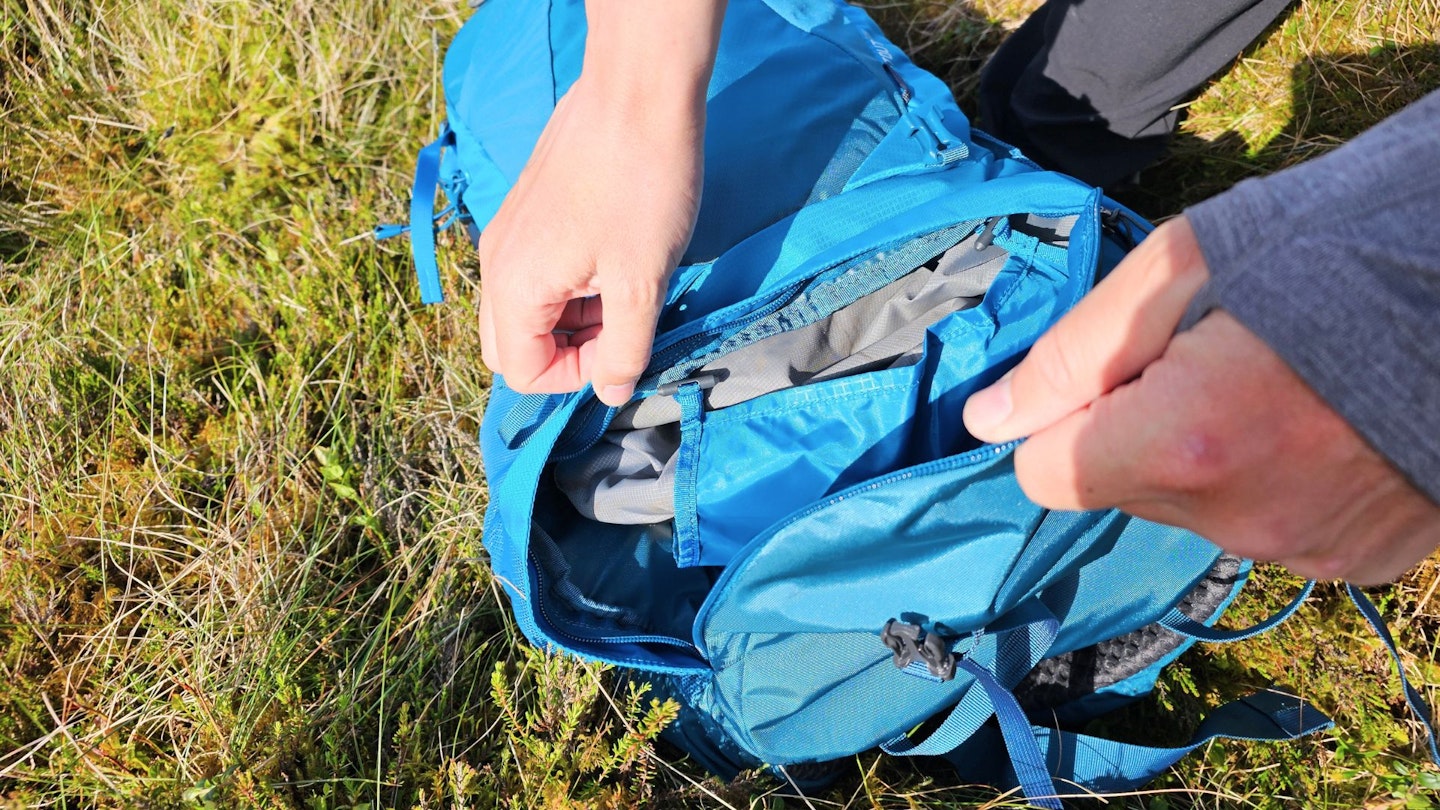
Externally, you get durable mesh pockets on both sides of the pack, plus top and bottom compression straps to cinch in your load or secure additional kit. The front of the pack has a stretch pocket with a durable fabric panel to help resist abrasion, plus a top buckle to stop items from spilling out. The pocket itself isn’t as roomy or as stretchy as some rivals though.
There are more webbing compression straps under the lid and at the base of the pack. Again, these could easily be used as lashing points for gear like a closed-cell foam mat. There’s also a trekking pole/tool attachment point with an upper bungee cord.
Performance and comfort

We carried the Stout 55 on a series of overnighters and wild camps across Snowdonia. It’s the ideal pack for that kind of adventure in the hills and mountains, being stable, comfortable and roomy enough to swallow all your camping and cooking kit. We’d have no qualms about taking this on extended treks and long-distance, multi-day hikes either – and if you need more carrying capacity, there’s also the bigger Stout 70 (or Amber 68 for women) to consider, both of which still weigh well under 1.8kg.
Of course, there are lighter packs available, but few that will carry big loads as comfortably as the Stout, or which are equipped with as many useful and versatile features. It’s well-built from high-quality materials too, so you can expect excellent durability – backed up by a generous lifetime guarantee.
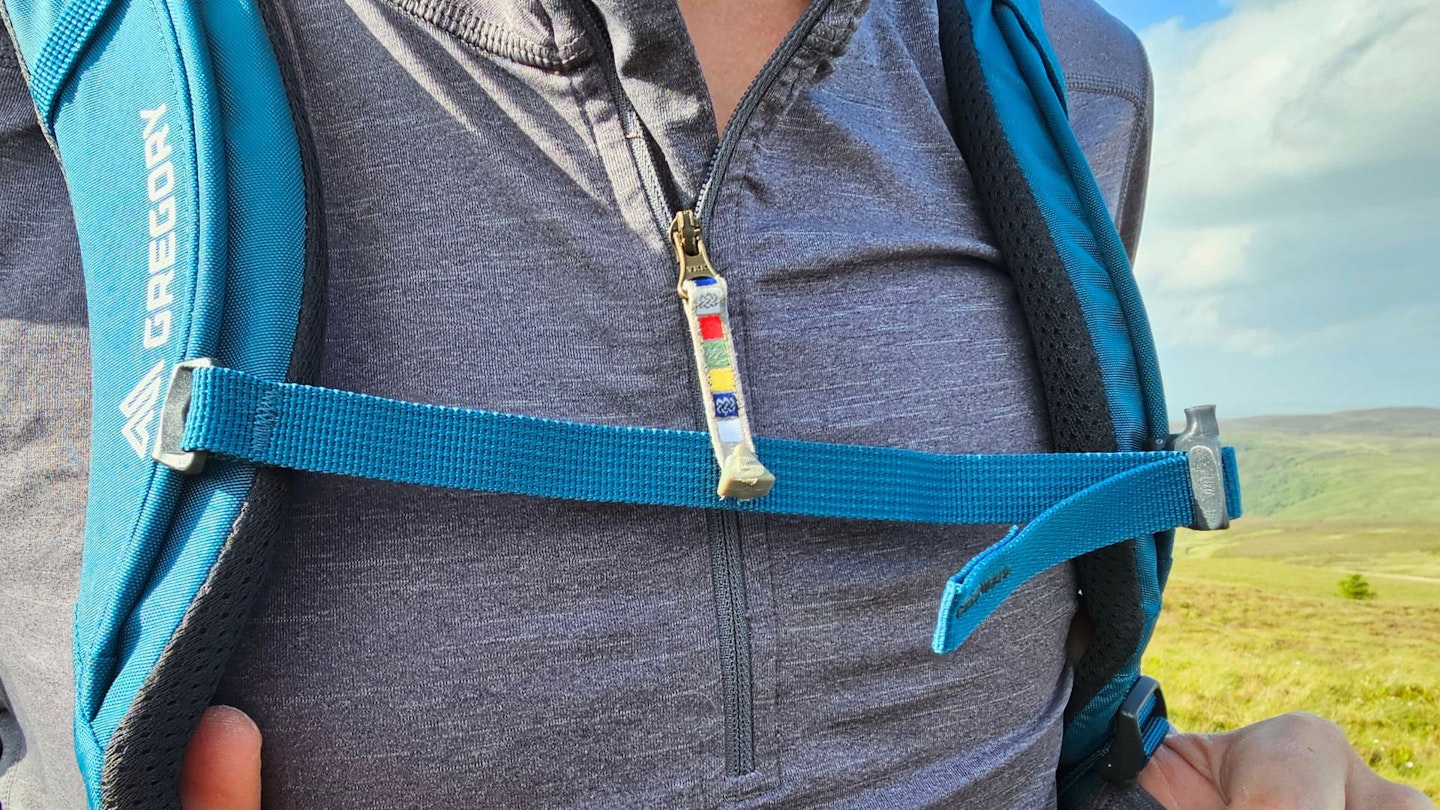
Any niggles? We wish the front panel was a bit bigger, or at least more stretchy. It’s tough to get much in there – waterproof jackets maybe, but not a sodden tent flysheet.
We’d also add that the back ventilation is decent but not exactly outstanding – it’s certainly not as airy as a fully suspended trampoline-style back system, as found on Osprey packs equipped with their Airspeed back system, like the new men’s Exos Pro and women’s Eja Pro 55. Those are also considerably lighter than the Stout 55 or Amber 54 – but they’re also £55 more expensive.
Shop this product
Sustainability
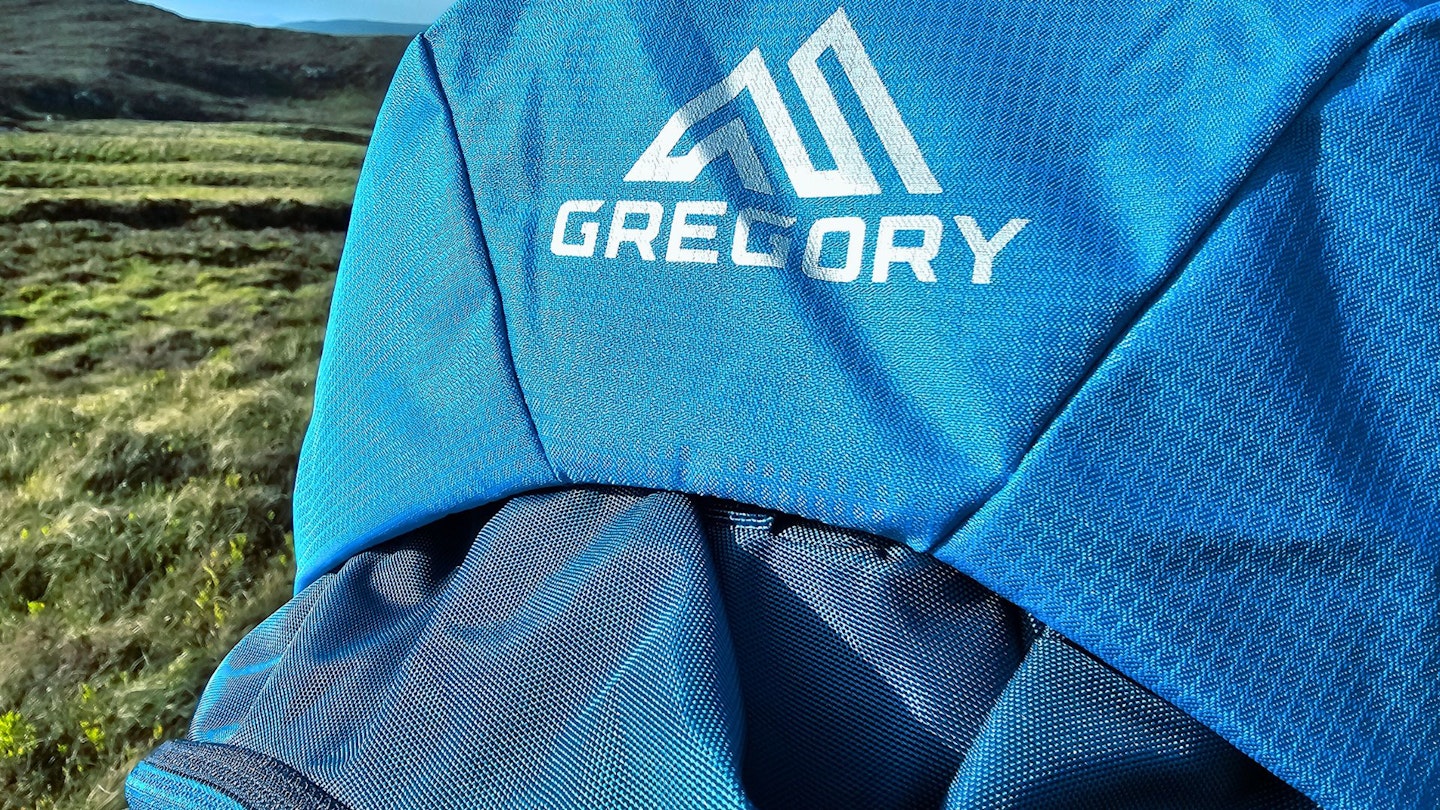
The Stout and Amber score pretty well on this front. The 210D nylon that makes up most of the main body of these packs is made from 40% recycled fibres. All DWR finishes are classified C0, i.e. free from environmentally harmful PFC chemical compounds.
Gregory has also introduced a full carbon lifecycle analysis into its product range. The latest version of the Stout 55, for example, has a 39% reduction in its carbon footprint. The brand has gone on to calculate how many miles you can walk rather than driving in order to offset the carbon cost of your purchase.
When it comes to hardware, the buckles of the Stout and Amber range are all made from Bluesign-approved plastics. Gregory also has repair agents all over Europe (including in the UK). So, if your Gregory pack needs a fixup, you're sorted there too.

Price and competition
The Stout 55 has a UK RRP of £185, but you can often find it for £20-£40 less. The same goes for the women’s equivalent, the Amber 54. It’s not a budget pack but it is excellent value when compared with rivals like the Lowe Alpine Yacuri. Indeed, that seems to be how these packs are positioned in the Gregory line-up, coming in slightly cheaper than the lighter but arguably less durable Paragon 58 (or women’s Maven) and the deluxe Zulu 55 (women’s Jade) or premium Katmai 55 (women’s Kalmia).
So, as sub-£200 all-rounders (or sub-£150 if you get a bargain), the Stout and Amber make for excellent backpacking rucksacks. The obvious alternatives to consider come from Gregory’s main US competitor Osprey, in the form of the Rook (women’s Raven). Both come in similar volumes and size ranges, including ‘extended fits’ (Osprey’s answer to the Gregory ‘Plus Size’ range).
The Rook and Raven are a bit better ventilated than the Stout and Amber, thanks to an Airspeed suspended mesh back system. But we feel like you get a bit more for your money from Gregory in terms of carrying comfort and features, and they’re also made from tougher fabrics.
Shop this product
Verdict

Gregory's Stout 55/Amber 54 is a versatile all-rounder with outstanding comfort and fit, plus practical features and great build quality. But it’s not the lightest or best ventilated pack around.
How we tested

The Gregory Stout 55 was tested by Matt Jones in Snowdonia on a collection of overnight trips and wild camps.
Matt is one of the UK's most authoritative voices on hiking and backpacking, having many years of experience as an outdoor journalist and numerous long distance trails under his belt inlcuding the Cambrian Way, the Cape Wrath Trail plus extensive hikes in the US, Spain, Scandinavia and New Zealand. He is one of our regular freelance gear testers on LFTO and our magazine, Trail.
